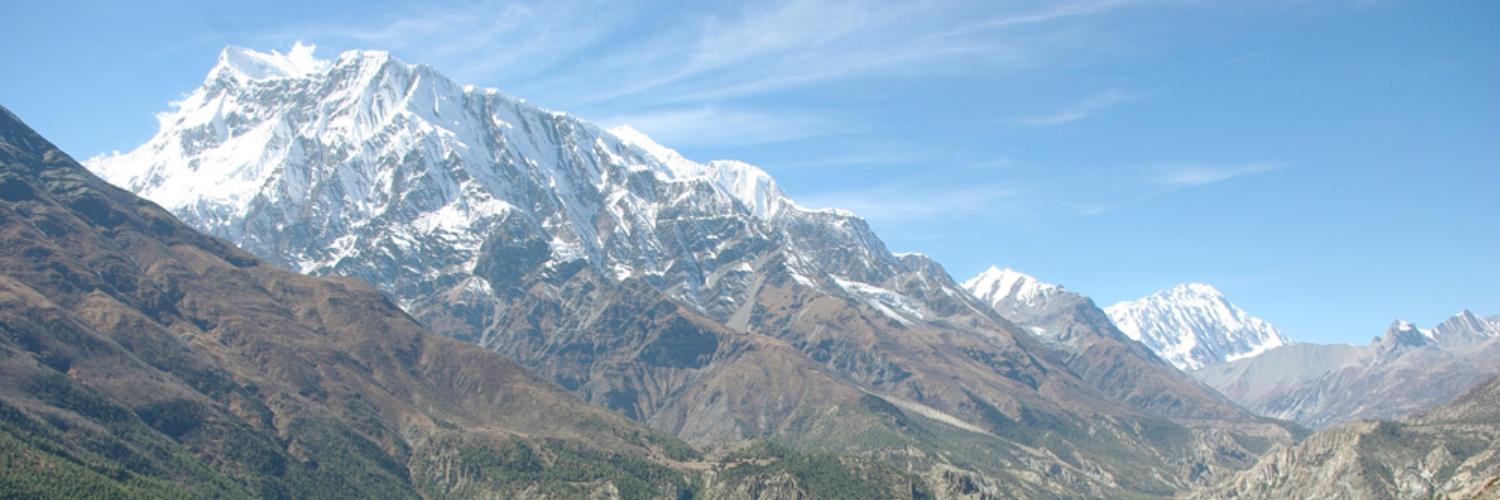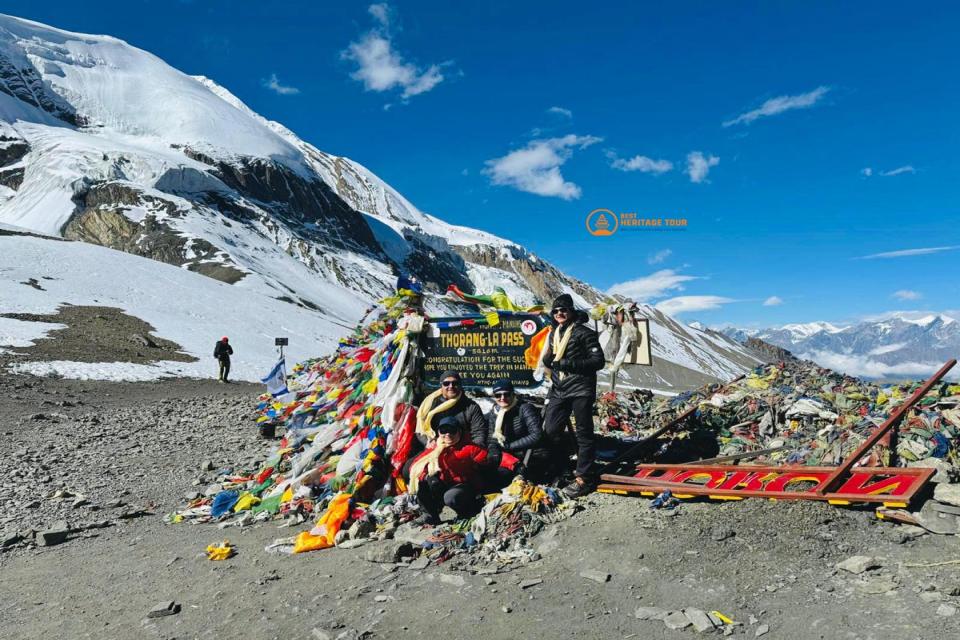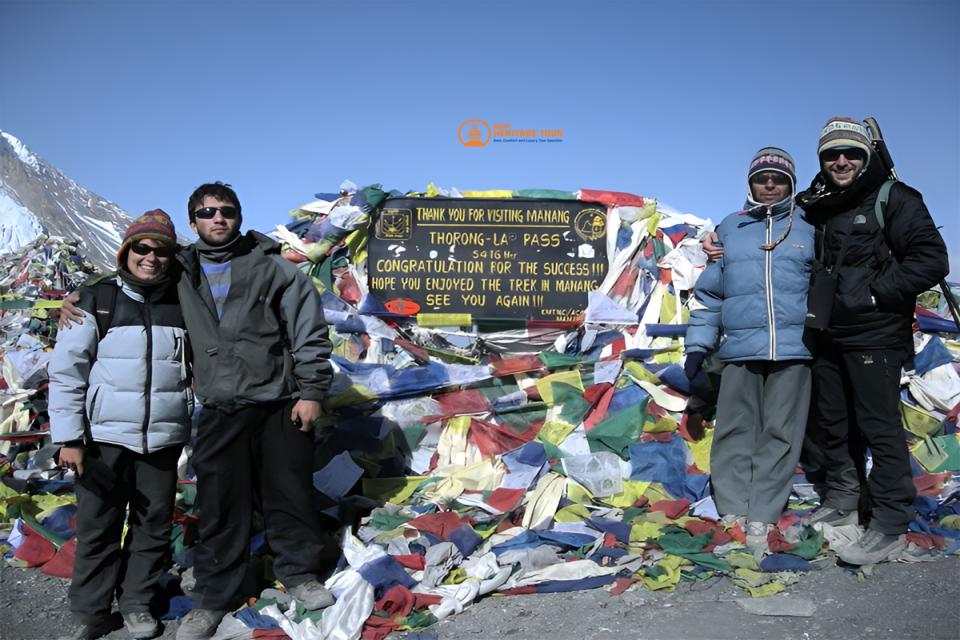Tilicho Lake Trek is one of the most breathtaking and rewarding trekking experiences in the Annapurna region of Nepal. Nestled high in the Himalayas, Tilicho Lake is renowned for its stunning turquoise waters surrounded by snow-capped peaks, rugged landscapes, and rich cultural heritage. While the trek itself offers adventure and awe-inspiring views year-round, choosing the right season to visit can significantly impact your experience.
Among the four seasons, autumn is often hailed as the best time to embark on the Tilicho Lake Trek. But is it truly the ideal season for every trekker? In this blog, we’ll explore the unique characteristics of autumn in the Tilicho region, compare it with other seasons, and provide essential tips to help you decide the best time for your adventure. Whether you are a seasoned trekker or an enthusiastic adventure seeker, this guide will help you plan your journey for maximum enjoyment and safety.
Overview of Seasons for Tilicho Lake Trek
Tilicho Lake Trek offers a distinct experience in each season due to its high altitude and Himalayan climate. Understanding the seasonal variations helps trekkers prepare adequately and choose the best time to visit.
-
Spring (March to May): Spring brings blossoming rhododendrons and moderate temperatures, making it a popular trekking season. However, occasional rainfall and melting snow can make trails slippery.
-
Summer/Monsoon (June to August): The monsoon season sees heavy rains, causing landslides and slippery paths. This season is generally not recommended for trekking Tilicho Lake due to safety concerns and limited visibility.
-
Autumn (September to November): Known for clear skies, stable weather, and vibrant landscapes, autumn is considered the peak trekking season. The dry trails and pleasant temperatures enhance the trekking experience.
-
Winter (December to February): Winters bring cold temperatures and heavy snowfall, especially at higher altitudes. While fewer trekkers venture during this time, winter trekking appeals to those seeking solitude and snow-covered vistas.
Each season offers a unique perspective of Tilicho Lake and its surrounding landscapes, but the choice depends on your trekking preferences, fitness level, and tolerance for weather conditions.
Why Autumn is the Best Time to Visit Tilicho Lake?
Autumn is widely regarded as the prime season for trekking in Nepal, and Tilicho Lake is no exception. Several factors make this season particularly favorable for adventurers seeking to experience the lake’s majestic beauty:
-
Clear and Stable Weather: After the monsoon rains, the skies clear up, offering spectacular views of the Annapurna range and Tilicho Lake itself. The stable weather means less chance of rain, landslides, or sudden storms, which can hamper trekking progress.
-
Moderate Temperatures: Autumn brings comfortable daytime temperatures, usually ranging between 10°C to 20°C (50°F to 68°F) at lower altitudes, making the trek enjoyable without excessive heat or cold. Nights can be chilly but manageable with proper gear.
-
Vibrant Natural Beauty: The autumn months showcase the region in full color - golden hues of the foliage, crisp blue skies, and pristine mountain panoramas. The natural scenery is at its most photogenic during this time.
-
Dry Trails and Better Accessibility: Trails are generally dry and firm, reducing the risk of slips and falls. This makes trekking safer and more accessible, even for those with moderate experience.
-
Ideal Conditions for Acclimatization: The pleasant weather supports gradual acclimatization, helping trekker’s better cope with high-altitude challenges.
These combined advantages make autumn the most popular and recommended season for the Tilicho Lake Trek, ensuring both safety and a memorable trekking experience.
Ideal Months in Autumn for Tilicho Lake Trek
The autumn season in Nepal typically spans from September to November, but not all months offer the same trekking conditions. Here’s a closer look at what each month brings for your Tilicho Lake adventure:
Tilicho Lake Trek in September
Early autumn marks the tail-end of the monsoon season. While rain is less frequent compared to summer, occasional showers can still occur, especially in the first half of the month. Trails start drying up, and the landscape remains lush and green, offering beautiful views. Trekking in late September is possible but requires some preparedness for sudden weather changes.
Tilicho Lake Trek in October
Considered the best month for trekking, October offers the most stable and clear weather. Skies are usually bright blue, and temperatures are comfortable for hiking. This month sees ideal visibility of the Annapurna peaks and Tilicho Lake’s stunning turquoise waters. The dry trails and pleasant climate attract many trekkers, making it a peak trekking time.
Tilicho Lake Trek in November
Early November continues the excellent weather conditions, though as the month progresses, temperatures begin to drop, especially at night. The air remains crisp and clean, providing spectacular panoramic views. By late November, the onset of winter starts, and the number of trekkers dwindles, making it perfect for those seeking solitude.
For the best experience, planning your trek in mid-October to early November is highly recommended. This window balances optimal weather, fewer crowds, and stunning natural beauty.
Weather Conditions During Autumn on the Tilicho Lake Trek
Understanding the weather patterns during autumn is essential for planning a safe and enjoyable Tilicho Lake Trek. Here's what you can typically expect in terms of temperature, precipitation, and general conditions:
-
Temperature Range:
-
Lower Elevations (e.g., Besisahar to Manang): Daytime temperatures range between 15°C to 22°C (59°F to 71°F), with cooler nights around 5°C to 10°C (41°F to 50°F).
-
Higher Elevations (e.g., Tilicho Base Camp, Thorong La): Daytime temperatures can drop to 5°C to 10°C (41°F to 50°F), and nights can fall below freezing, around -5°C to -10°C (23°F to 14°F).
-
-
Rainfall and Snowfall:
-
Autumn is known for being dry and stable. Rainfall is minimal, especially in October and November.
-
While snow is uncommon in early autumn, light snowfall can begin at high altitudes by mid to late November.
-
-
Sky Conditions:
-
Skies remain mostly clear with excellent visibility of the surrounding mountains, making this one of the most scenic periods to trek.
-
-
Wind and Sun:
-
Afternoon winds are common at higher altitudes but generally mild. Strong sun exposure is a concern, so sun protection (sunscreen, hat, sunglasses) is a must.
-
Autumn's weather offers near-perfect conditions for high-altitude trekking - balancing warmth in the day, manageable cold at night, and breathtaking clarity for photos and views.
Pros and Cons of Trekking Tilicho Lake in Autumn
Autumn is widely regarded as the best time to visit Tilicho Lake - but like any season, it comes with its advantages and a few considerations. Here's a breakdown to help trekkers make informed decisions:
Pros:
-
Stable Weather Conditions: Autumn offers the most reliable weather for trekking - clear skies, dry trails, and mild temperatures.
-
Stunning Mountain Views: With crisp, clear air, the visibility is unmatched. Trekkers can enjoy breathtaking panoramas of Annapurna, Gangapurna, Tilicho Peak, and more.
-
Vibrant Landscapes: Forests and valleys come alive with golden hues, red rhododendron leaves, and alpine vegetation during early autumn.
-
Festive Atmosphere: Nepal celebrates major festivals like Dashain and Tihar during this season, adding cultural richness to the trekking experience.
-
Better Trail Safety: Fewer chances of landslides or washed-out trails compared to monsoon season.
Cons:
-
Crowded Trails and Teahouses: Autumn is the peak trekking season, so expect more foot traffic and fully booked accommodations—especially in places like Manang and Tilicho Base Camp.
-
Higher Prices: Increased demand during autumn often leads to slightly higher rates for lodging, transportation, and guide/porter services.
-
Limited Wildlife Spotting: Animals are less active during the colder months compared to spring.
Here’s a clean summary table for Pros and Cons of Trekking Tilicho Lake in Autumn:
|
Pros |
Cons |
|---|---|
|
Clear skies and panoramic mountain views |
Popular trails may get crowded |
|
Stable weather with minimal rain or snowfall |
Accommodation may need to be booked in advance |
|
Perfect temperatures for trekking (not too cold) |
Higher prices due to peak season demand |
|
Colorful landscapes with vibrant autumn foliage |
Dry air and dust in some sections of the trail |
|
Ideal for photography and wildlife spotting |
Night temperatures can still be chilly at high altitudes |
Overall, the advantages of trekking Tilicho Lake in autumn far outweigh the downsides, especially for those who prioritize scenery, trail conditions, and weather reliability.
What to Pack for Tilicho Lake Trek in Autumn
Packing smartly is essential for a successful and comfortable Tilicho Lake Trek in autumn. The weather is generally favorable, but the trek’s high altitude and temperature variations demand well-thought-out gear. Here’s a streamlined checklist for autumn:
Clothing:
-
Base Layers: Moisture-wicking thermal tops and bottoms.
-
Insulation Layer: Fleece or down jacket for chilly mornings and nights.
-
Outer Layer: Lightweight, waterproof, and windproof jacket and pants.
-
Trekking Pants & Shirts: Breathable, quick-drying fabric.
-
Hat & Gloves: Warm woolen hat and insulated gloves for higher elevations.
-
Sun Protection: Cap or wide-brimmed hat, UV sunglasses, and sunscreen (SPF 30+).
Footwear:
-
Trekking Boots: Well-broken-in, waterproof boots with ankle support.
-
Trekking Socks: Thermal or wool socks to keep feet warm and blister-free.
-
Camp Shoes: Lightweight sandals or slip-ons for teahouse comfort.
Essentials:
-
Backpack (40-50L): With rain cover and well-padded straps.
-
Sleeping Bag: Rated to -10°C (14°F) or lower for cold nights.
-
Water Bottles & Purification: 2L+ capacity and water purification tablets/filters.
-
Trekking Poles: Useful for balance on steep or uneven terrain.
-
Headlamp: With spare batteries.
Other Items:
-
Personal First Aid Kit: Include altitude medication, bandages, and basic meds.
-
Power Bank: Charging options are limited at high altitudes.
-
Toiletries: Eco-friendly soap, tissues, wet wipes, hand sanitizer.
-
Dry Bags/Ziplocks: To protect electronics and clothes from moisture.
Pro Tip: Pack in layers and keep it light but don’t skip out on warmth and safety essentials. If you’re hiring a porter, you can distribute heavier items and focus on a comfortable day pack.
Expert Tips for Autumn Trekkers
Autumn may be the most popular trekking season in Nepal, but a few expert insights can make your Tilicho Lake Trek even more enjoyable and safe. Here are top tips from seasoned guides and frequent trekkers:
1. Book in Advance
Due to high demand, accommodations in places like Manang, Tilicho Base Camp, and Yak Kharka can fill up fast. Secure your trek permits, teahouses, and guides/porters at least a few weeks in advance to avoid last-minute hassles.
2. Start Early in the Day
Clear skies in the morning often give way to cloud buildup in the afternoon. Start trekking early (6:00-7:00 AM) for the best mountain views and to reach your destination before dusk.
3. Acclimatize Properly
Even in good weather, altitude sickness can affect anyone. Follow the recommended itinerary with built-in acclimatization days - especially in Manang and stay hydrated. Avoid rushing the route.
4. Dress in Layers
Temperature swings are common. Mornings and nights can be freezing, while mid-days can get warm. Layer your clothing to adapt easily without overheating or getting cold.
5. Carry Local Cash
ATMs are not available beyond Chame, and teahouses do not accept cards. Carry enough Nepali rupees for your entire trek, including meals, snacks, and emergency expenses.
6. Bring a Reusable Water System
Reduce plastic waste by carrying a reusable bottle and water purification tablets or filters. Safe drinking water is crucial, and autumn's dryness makes hydration even more important.
7. Engage a Licensed Guide
While solo trekking is possible, hiring a guide adds safety, local insights, and stress-free navigation especially on the trail to Tilicho Lake and Thorong La Pass.
8. Don’t Skip Travel Insurance
Ensure your insurance covers high-altitude trekking and emergency evacuation. Weather and health issues are unpredictable, even in autumn.
Bonus Tip: Take your time at Tilicho Lake - it’s a spiritual and scenic wonder, not just a milestone. Savor the silence, take in the views, and reflect on your achievement.
Conclusion: Is Autumn the Best Time for Tilicho Lake Trek?
Absolutely. Autumn stands out as the most ideal season for trekking to Tilicho Lake. From stable weather and breathtaking Himalayan views to vibrant landscapes and rich cultural experiences, autumn offers everything a trekker dreams of. The clear skies allow for uninterrupted panoramas of the Annapurna and Dhaulagiri ranges, while the trails are alive with golden forests and festive energy.
If you’re planning your Tilicho Lake adventure, September to November gives you the perfect blend of natural beauty, cultural immersion, and safe trekking conditions. Whether you’re a seasoned hiker or a first-time trekker in Nepal, autumn guarantees an unforgettable journey.
Ready to explore Tilicho Lake this autumn?
Book your Tilicho Lake Trek now with Best Heritage Tour for expert guidance, seamless logistics, and a life-changing experience.
Contact Details:
Phone/ WhatsApp/ Viber: +977-9851149197
Website: www.bestheritagetour.com
Email: info@bestheritagetour.com
Office Location: Thamel Marg, Kathmandu Nepal
Author: Best Heritage Tour
Date: 19th June, 2025



